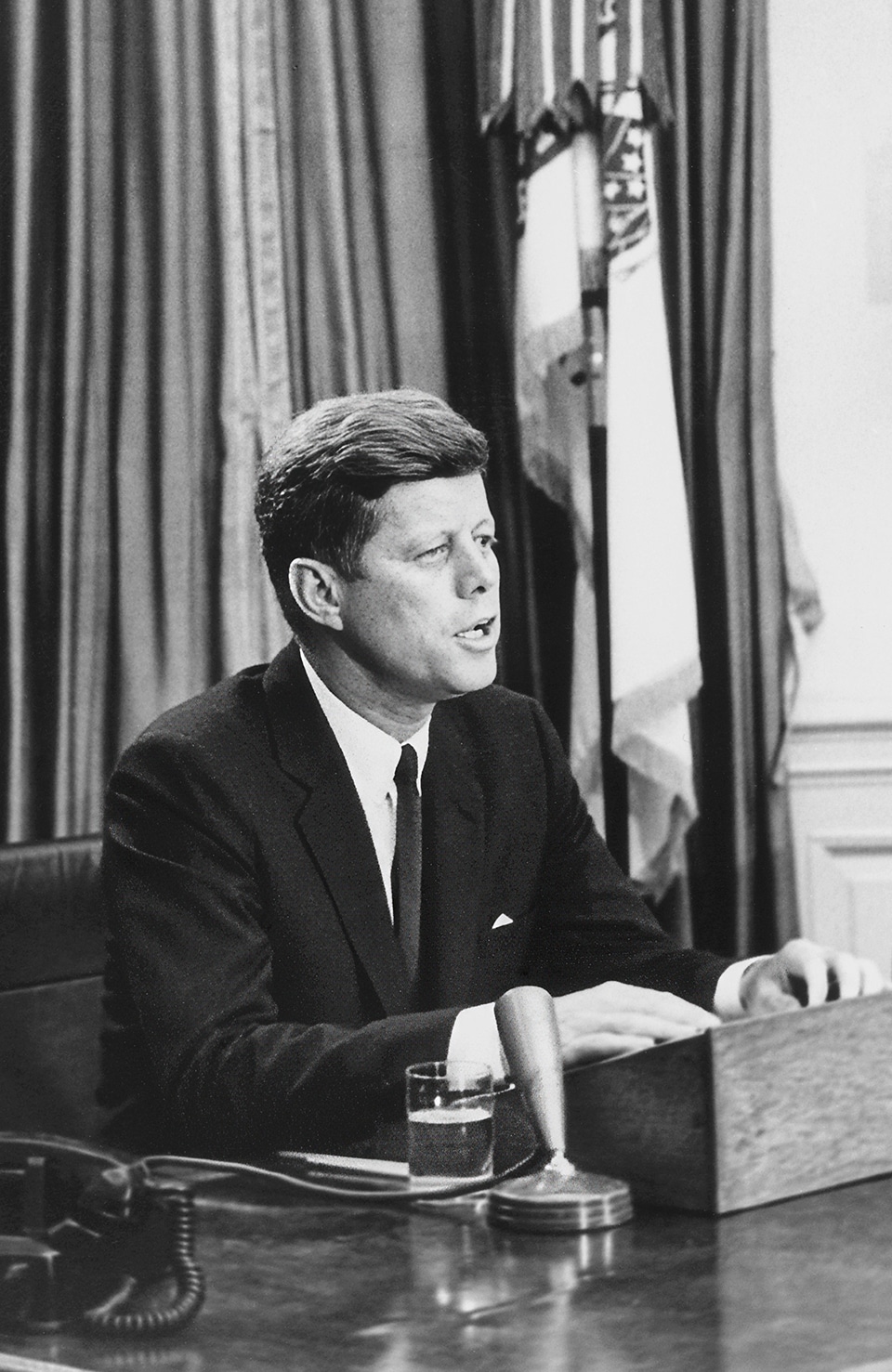RESOURCES
PEOPLE
Pres. John Fitzgerald Kennedy
1917-1963
John F. Kennedy, the 35th President of the United States (1961–1963), is often remembered for his evolving role in the American civil rights movement. While his presidency was initially marked by caution on civil rights to maintain support among Southern Democrats, Kennedy increasingly embraced the movement as the struggle for racial justice intensified, particularly in Southern communities resisting desegregation.
One of the most troubling episodes of this resistance occurred in Prince Edward County, Virginia, where public officials closed the entire public school system from 1959 to 1964 rather than comply with federal court orders to desegregate. The county became a flashpoint in the broader campaign against “Massive Resistance”—a strategy by white leaders across the South to defy the Brown v. Board of Education Supreme Court decision of 1954.
Though the school closings began before Kennedy took office, the crisis deepened during his presidency. More than 1,700 Black students in Prince Edward County were left without formal public education for five years. Wealthier white families created private, whites-only academies, while Black children and poorer white students had few options, relying on church basements, makeshift classrooms, or being sent out of state to continue their education.
Kennedy’s administration initially tried to avoid direct federal intervention in Prince Edward County, wary of inflaming Southern opposition. However, as the national spotlight intensified on the injustice in the county—and with mounting pressure from civil rights leaders, clergy, and the press—Kennedy took a more active role.
In 1963, the Kennedy administration filed a friend-of-the-court brief in the Griffin v. County School Board of Prince Edward County case, which was eventually heard by the Supreme Court. The brief argued that the county’s refusal to fund public schools constituted a violation of Black students’ constitutional rights under the Equal Protection Clause. Kennedy also directed his Department of Justice, under Attorney General Robert F. Kennedy, to support lawsuits and educational relief efforts for displaced students.
Moreover, in his landmark June 11, 1963 civil rights address, President Kennedy acknowledged the moral urgency of desegregation and equal treatment under the law. Although he did not name Prince Edward County specifically, his administration’s legal strategy and moral framing helped pave the way for the 1964 Supreme Court ruling in Griffin v. County School Board, which ordered Prince Edward County to reopen its public schools.
Later in 1963, in an effort to respond more directly to the educational crisis, the Kennedy administration helped establish the Prince Edward County Free Schools—a network of temporary schools funded through federal, state, and private philanthropic support, including the American Friends Service Committee and the Ford Foundation. These schools served as an emergency measure to ensure some educational continuity for displaced Black students until the courts could force a reopening of the public system.
Tragically, President Kennedy was assassinated on November 22, 1963, just months after his administration helped launch the Free Schools. The news of his death reached students and teachers in Prince Edward County with a profound sense of loss. In the days following the assassination, many Free School students wrote heartfelt messages and letters of condolence.
One collective tribute read:
“He was the first President who truly saw us. We will not forget that he believed we deserved to learn.”
These expressions of grief underscored the emotional and symbolic importance of Kennedy’s evolving civil rights stance to the children who had been denied education for so long.
In the aftermath of his death, the legal case continued, and in May 1964, the U.S. Supreme Court ruled in Griffin v. County School Board that Prince Edward County’s actions were unconstitutional, ordering the schools to reopen. This outcome was a direct result of the legal groundwork laid during Kennedy’s presidency.
